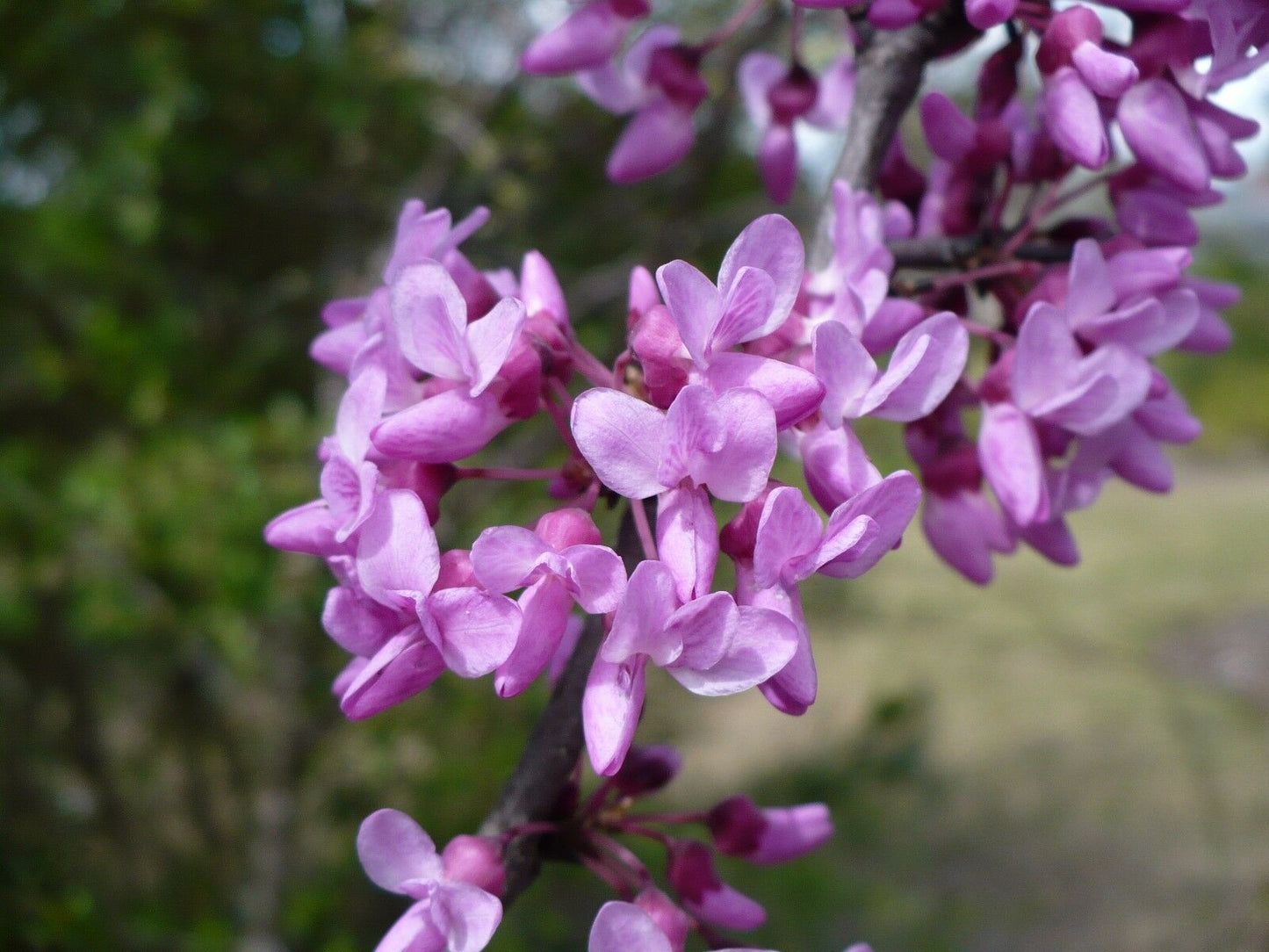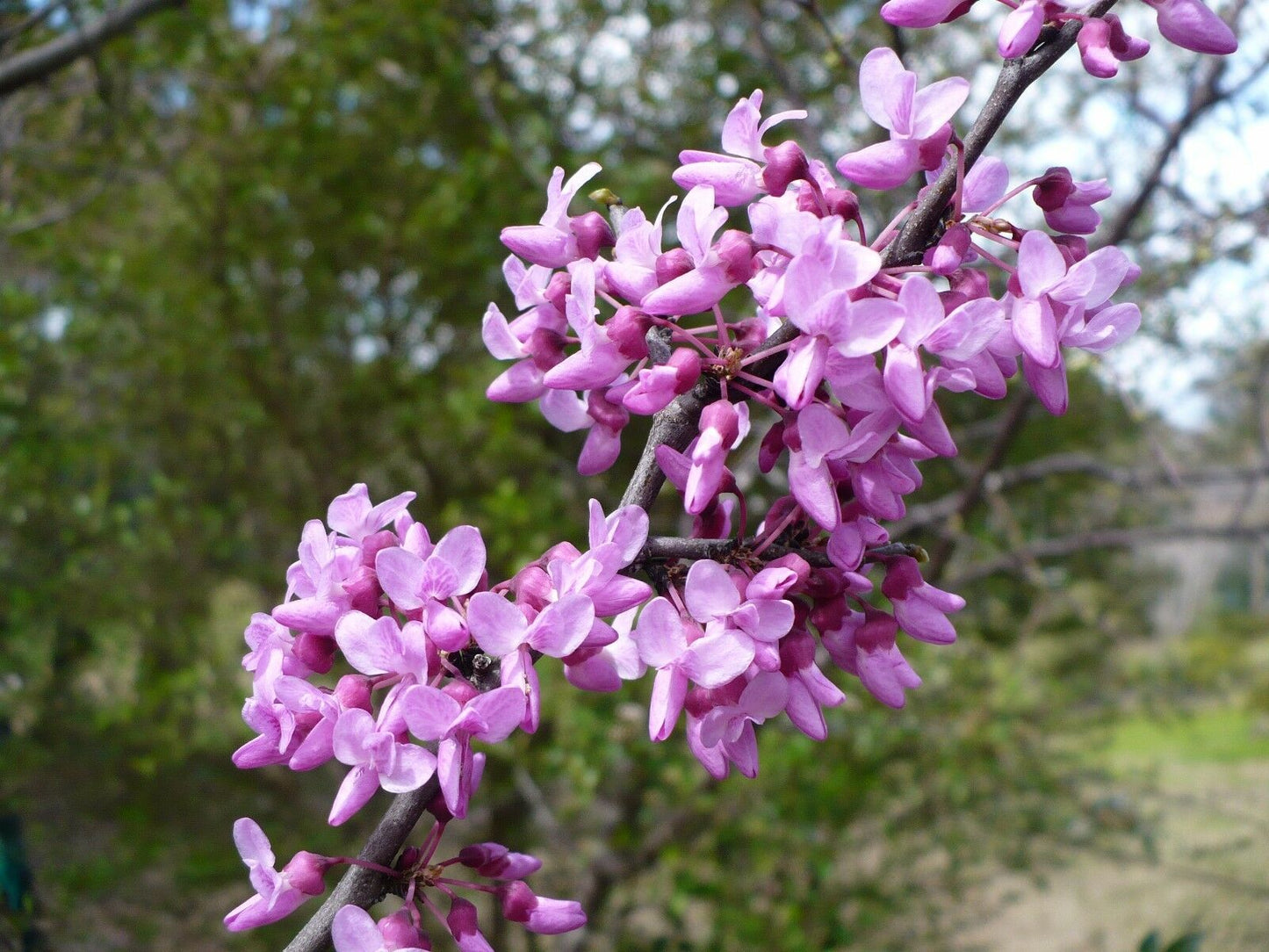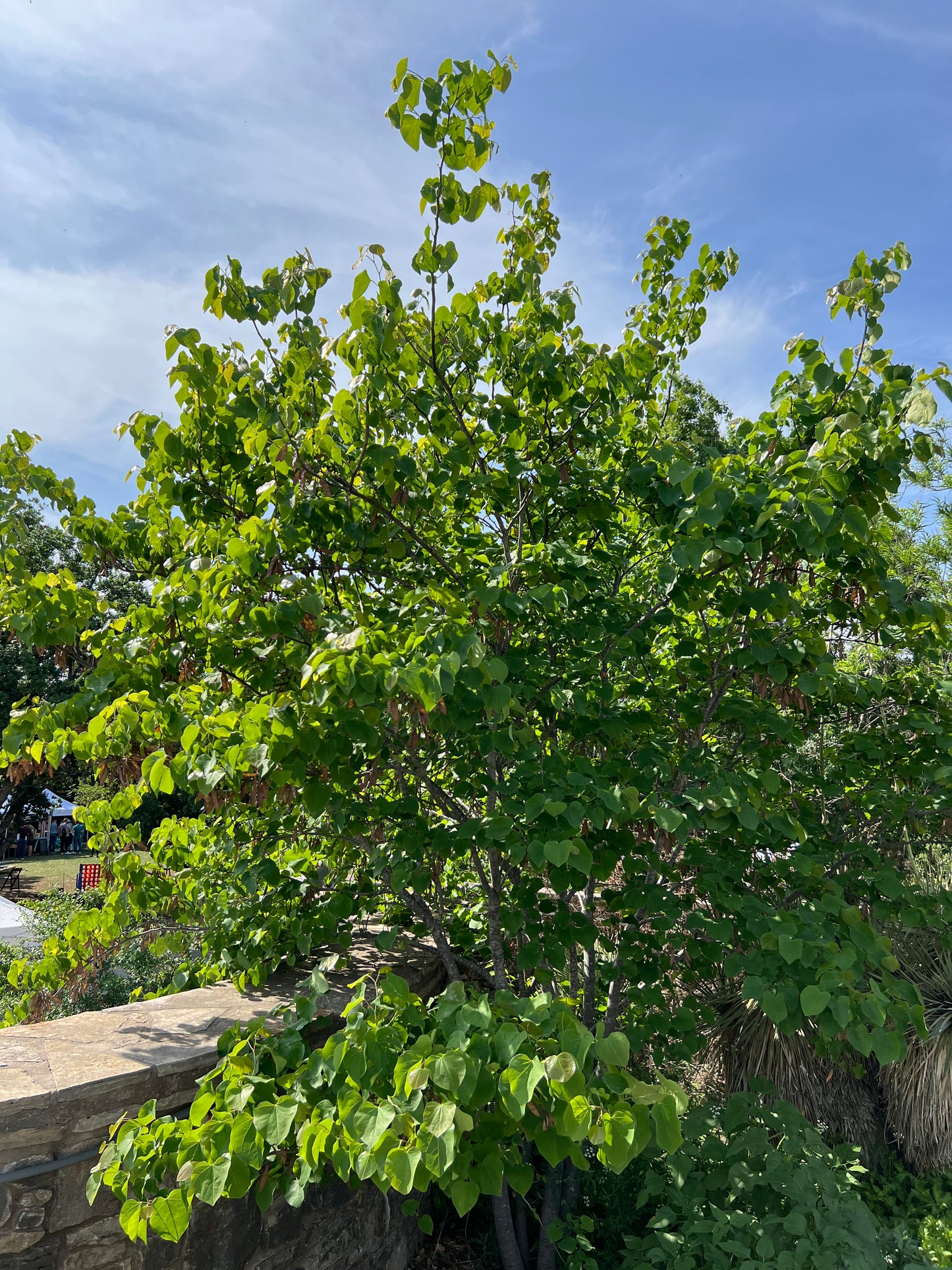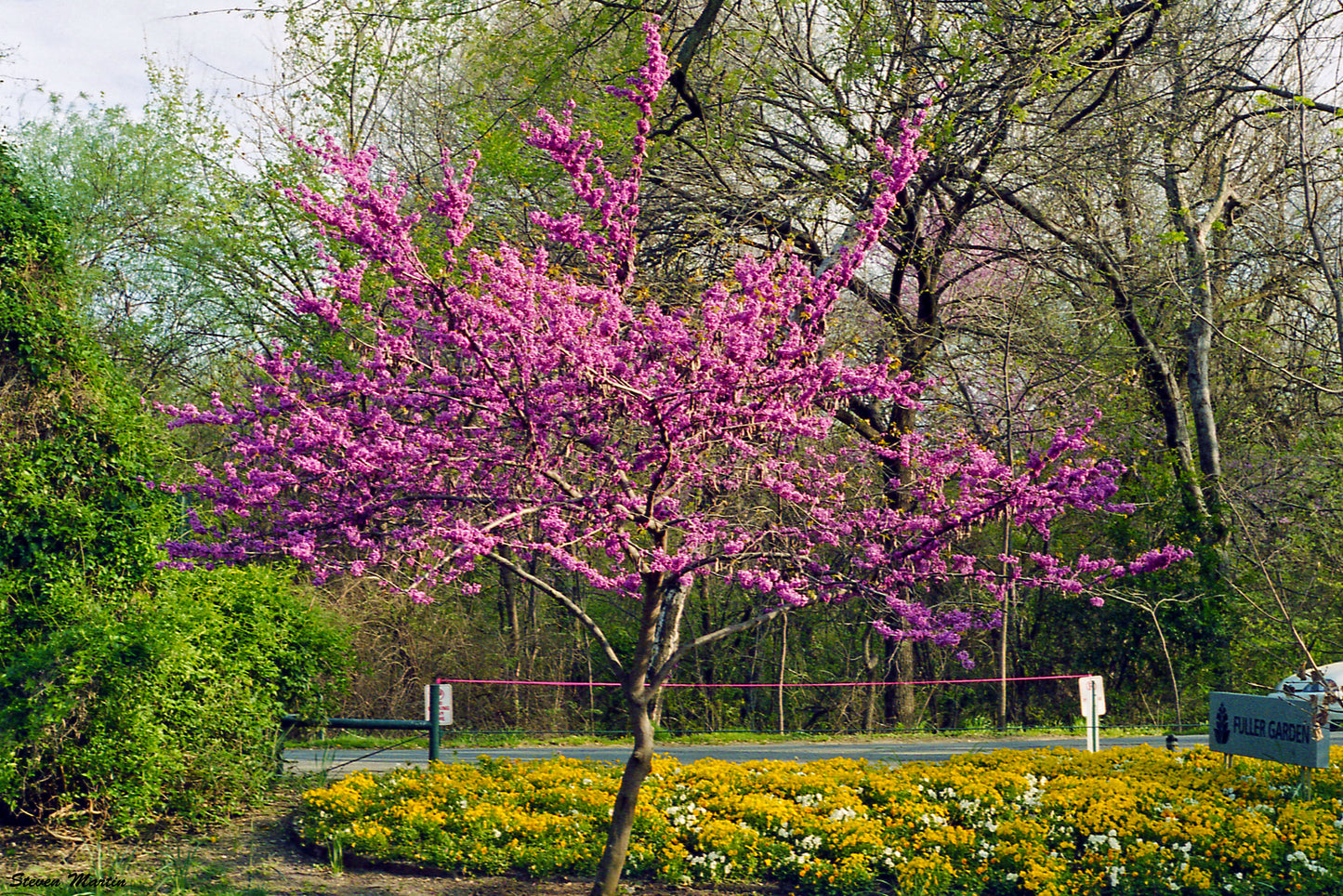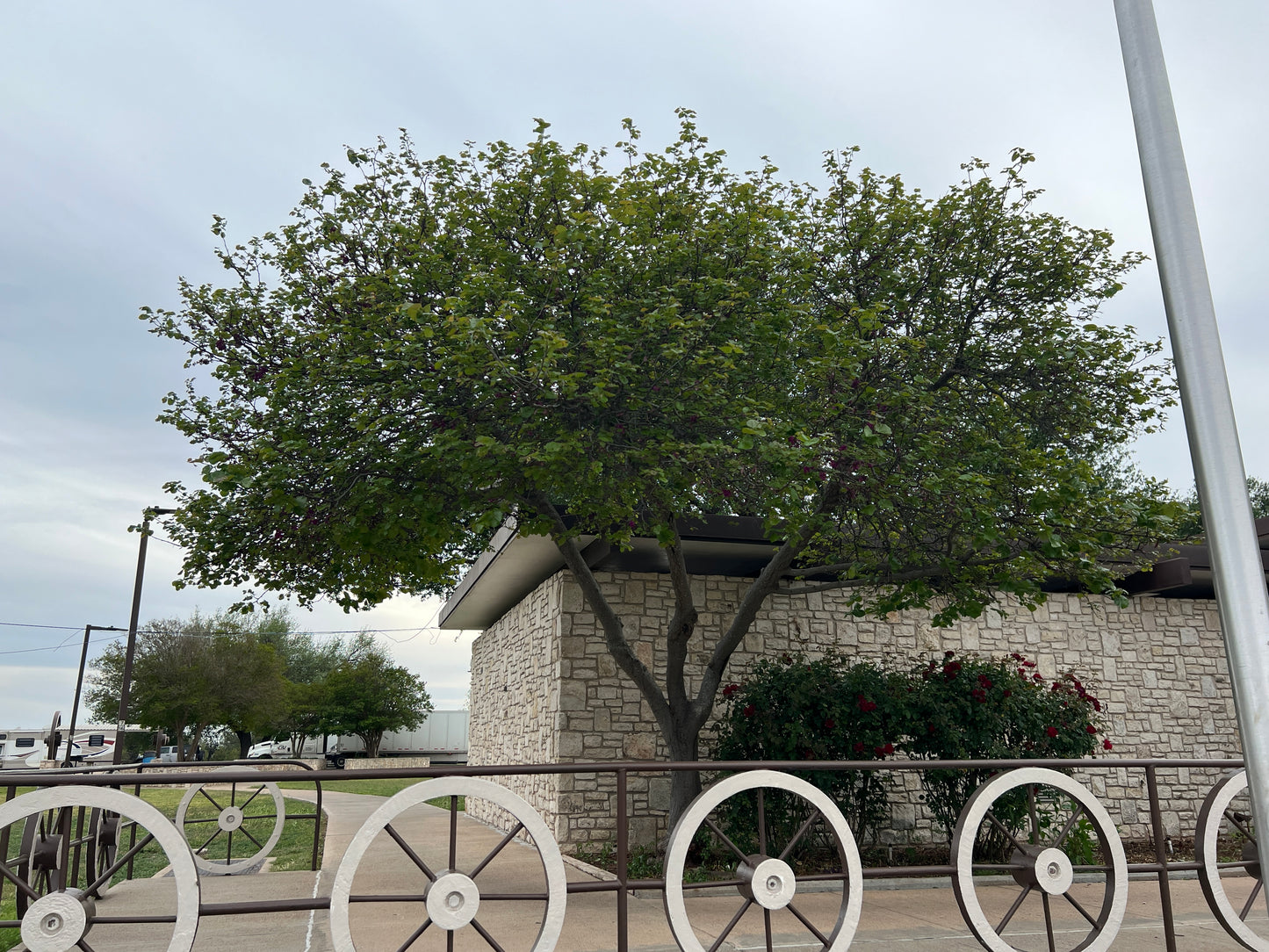Floridaseeds
Texas Redbud Cercis canadensis var. texensis 20 Seeds USA Company
Texas Redbud Cercis canadensis var. texensis 20 Seeds USA Company
Couldn't load pickup availability
Cercis canadensis var. texensis, commonly known as the Texas Redbud, is a variety of the Eastern Redbud (Cercis canadensis). Here are some key details about this plant:
Description
Foliage: The Texas Redbud has thick, glossy, dark green leaves that are often smaller and more rounded than the leaves of the Eastern Redbud. In the fall, the leaves can turn yellow.
Flowers: It produces vibrant, pinkish-red to magenta flowers that bloom in early spring, before the leaves emerge. The flowers are pea-like and grow in clusters along the branches and sometimes even on the trunk.
Growth Habit: This variety typically has a more compact and rounded form compared to other Redbuds. It often grows as a small tree or large shrub.
Height: It usually reaches a height of 10 to 15 feet (3 to 4.5 meters) and a spread of 10 to 15 feet.
Habitat and Distribution
Native Range: As its name suggests, the Texas Redbud is native to Texas and Oklahoma. It is well adapted to the conditions of these regions, including the heat and drought.
Preferred Soil: It thrives in well-drained soils and can tolerate a range of soil types, including sandy and rocky soils.
Landscaping: Due to its attractive flowers and manageable size, the Texas Redbud is a popular choice for ornamental planting in gardens and landscapes. It can be used as a focal point, in mass plantings, or as part of a mixed shrub border.
Wildlife: The flowers attract pollinators such as bees, and the seeds can be a food source for birds.
Advantages
Drought Tolerance: This plant is particularly valued for its ability to withstand dry conditions once established, making it suitable for xeriscaping.
Ornamental Value: Its striking flowers and attractive foliage make it a visually appealing addition to any garden.
Growing Instructions for the Texas Redbud
The seeds have a period of dormancy. They can be planted outdoors in the fall or winter for spring germination or they can be cold stratified to simulate winter conditions and to break their dormancy at any time of the year. 1. Scarify the seeds by nicking or sanding the seed coat. The seeds can be sanded with sandpaper, a nail file or an emery board. 2. Soak the seeds in water for several hours. 3. Put the seeds in a ziplock bag. 4. Put the bag in the refrigerator and leave it there for 3 months. 5. The seeds like moist, well-drained soil. Prepare a mixture of half potting soil and half sand, perlite or vermiculite. Put the soil in a pot. 6. Sow the seeds on the soil. 7. Cover the seeds with a thin layer of soil. 8. Water the soil so that it is moist but not wet. 9. When the seedlings are a few inches tall, they can be transplanted.
Materials
Materials
Shipping & Returns
Shipping & Returns
Dimensions
Dimensions
Care Instructions
Care Instructions
Share
